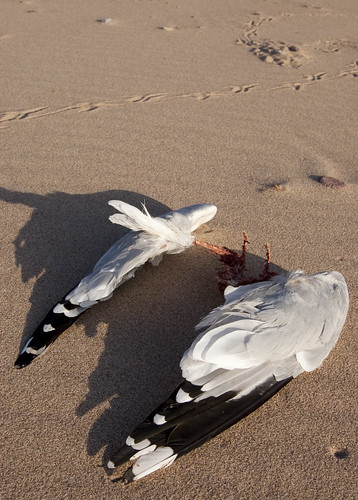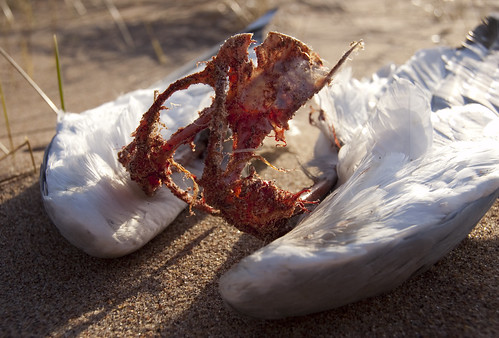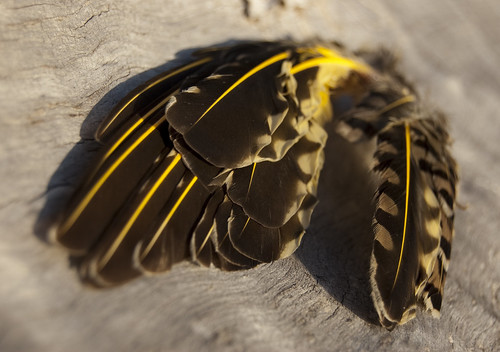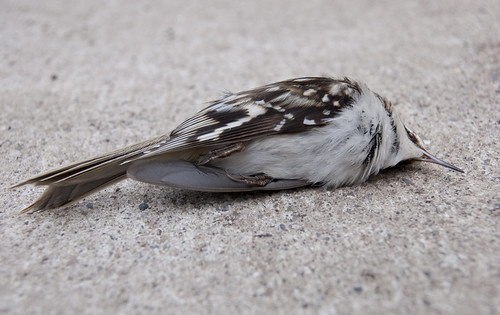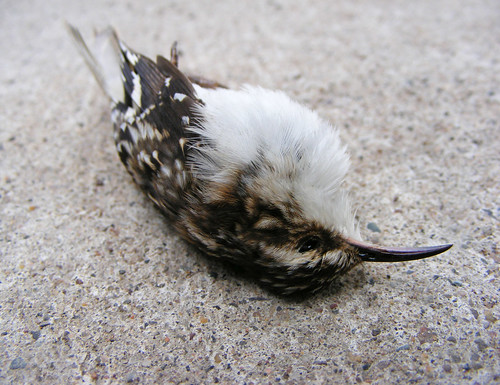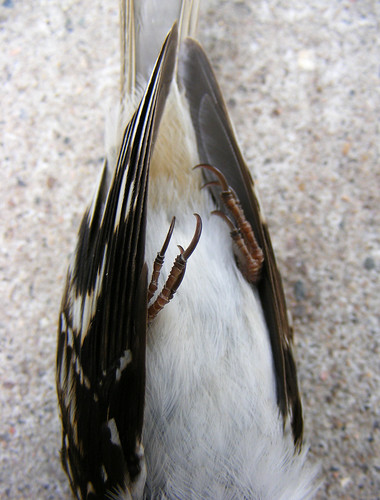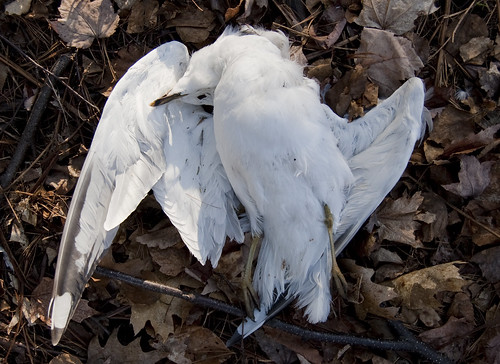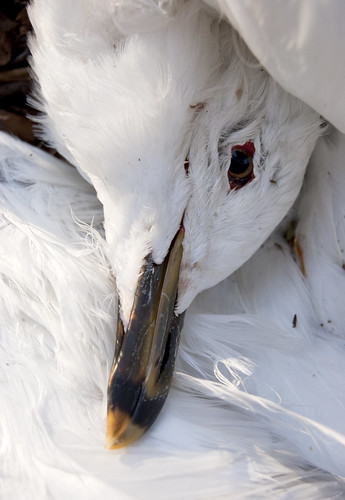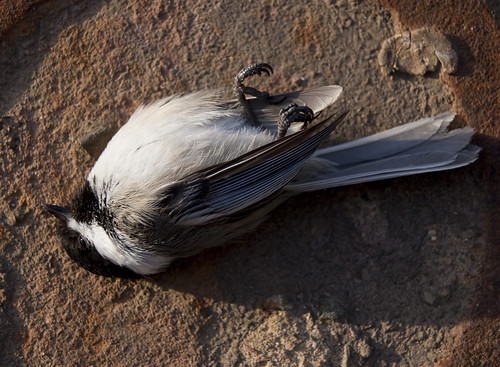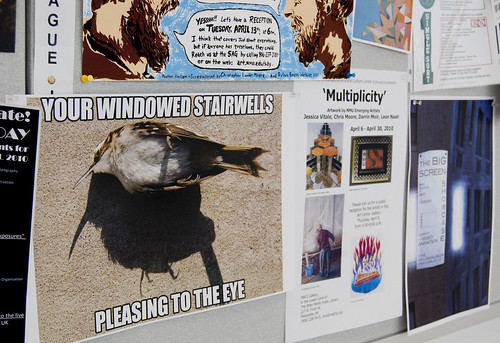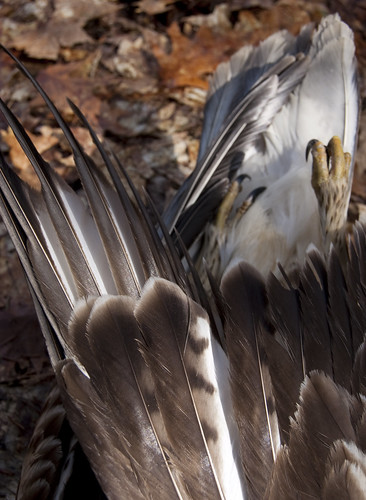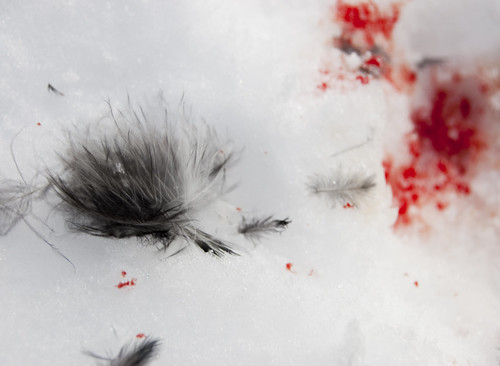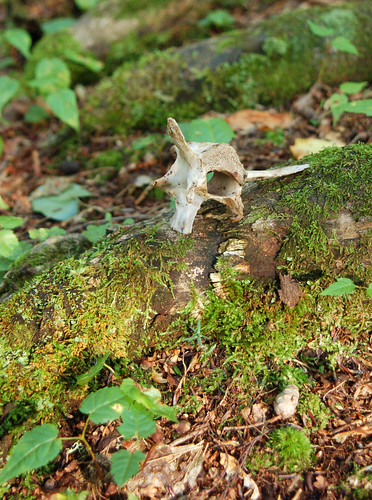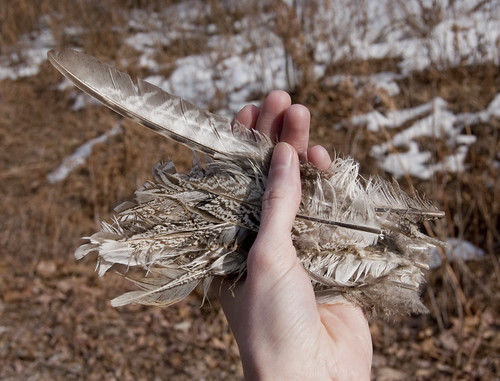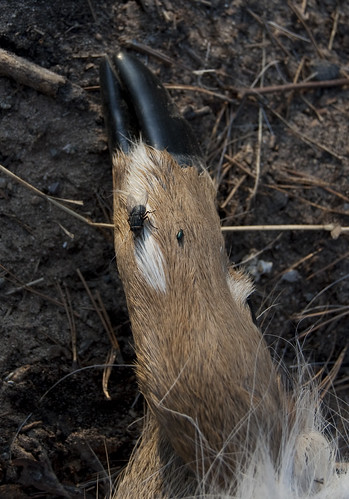Installation for the senior show has begun! I'll be hanging my photographs tomorrow. There's a lot of math involved, which is a little intimidating for me, seeing as how I'm pretty horrible at doing basic tasks like figuring out window-mat measurements. Anyway, also involved are the little bugs that come up along the way -- in my case, a problem with the
clip frames I am using.
I've always been the type of person to carefully mat my photographs, but for the Useless Creatures series, I wanted to display my work differently. To me, mats and frames -- elaborate or otherwise -- distance the viewer from the photograph; a barrier is created, and the people, places and things depicted seem far away and perhaps less than real. The whole point of this series is to compel the viewer actually
see the dead animals for what they are, and to me, a clip frame does just that. There are no mats or physical frames interfering with the photograph, and it is almost as if a window has opened in the gallery wall, depicting the subject as realistically and physically as possible, short of actually bringing in a decomposing animal and placing it on a pedestal (a thought that I did briefly entertain, by the way).
Anyway, the photographs look great behind glass, but the problem with the clip frames is the hardware that holds the glass to the particleboard backing. The clips just
won't stay put, and will snap off, sometimes with only the slightest budge. In addition, the clips double as the hangers, so yeah, that won't work. After asking Melissa Matuscak (spirited teacher, runner-of-the-DeVos-Art-Museum, and amazing, overworked person extraordinaire) what to do, we've decided on L-hooks. Basically, the backboard, photograph, and glass will be held against the wall itself. This is something I've never actually done, but I've seen this method of display in galleries before, and it's quite attractive.
Also included with my photographs will be my artist's statement and a portrait of myself. I've finalized my statment -- at last! -- and this is what will be hanging next to the Useless Creatures:
In our society there is a tendency to shun the corpses of non-human, non-domesticated animals. Their bodies are often viewed as disgusting, offensive, and useless things. In nature, however, dead animals are vital to the ecosystems of which they are a part, and countless animals depend upon the deaths of other animals to survive.
When I encounter a dead creature, it gives me pause. I consider the animal, its life, and how it might have died, but I also wonder how many other animals have depended upon its body, and how many more will in the coming days and months. I regard each dead creature I find as an individual, and I treat it as such. I choose to photograph them respectfully, portraying these animals as the dignified beings they are, in life. In every stage of their decay, they are beautiful if not interesting, and I try to portray that through my photography. Dead animals are not offensive, nor are they repulsive, and they are not useless creatures.And, of course, the portrait! A few days ago, Steph and I went out to the Presque Isle Bog to photograph one another. For some reason I thought it'd be a great idea to pose with First January Deer -- which, with the warmer weather (nevermind the freak snowstorm we got on Tuesday), was definitely a rather stinky task.
 The Northern Michigan University School of Art and Design's Winter 2010 Senior Exhibition, 'Untitled', opens Wednesday, April 14 and has its closing reception Friday, April 30.
The Northern Michigan University School of Art and Design's Winter 2010 Senior Exhibition, 'Untitled', opens Wednesday, April 14 and has its closing reception Friday, April 30.
